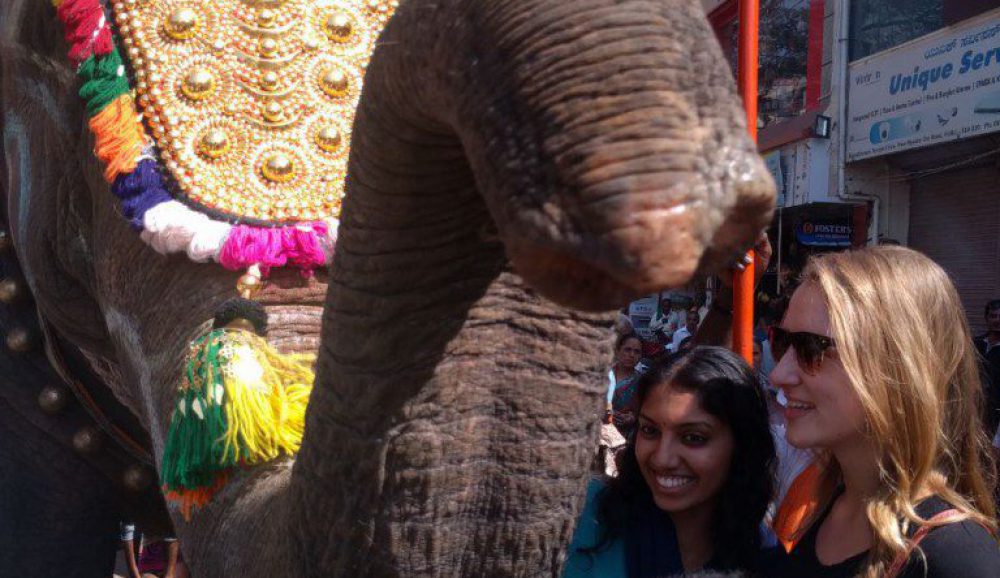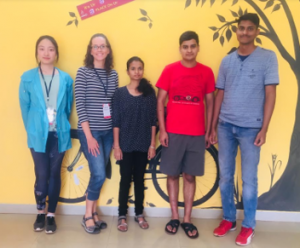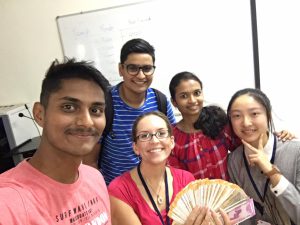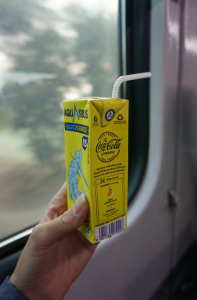Our time in India has come to a close. In some ways it feels like the past three weeks have flown by, but in other ways, it seems like it was a very long time ago that we all landed in Hubli and met our hosts in the Scholar House. We managed to fit in a lot of learning, new experiences, and sightseeing into a very short time!
Though there are many wonderful memories to reflect upon, one of my favorites was our trip to Sushanti Orphanage to present donations in person. The entire GE2 class earned more than 35,000 rupees during the two-day “500 Rupee Challenge”, and several teams decided to donate their earnings to Sushanti. A group of ten students wanted to visit the orphanage, so we gathered together after finishing our exams and made our way there via auto rickshaw.
Though Sushanti Orphanage had notice that we were coming, it was helpful that we had an official letter to present as well. Once he understood the purpose of our visit, the gentleman in charge gathered the children together so that we could meet them. The children introduced themselves to us and patiently listened as we explained what we were doing at their school. One of the KLE students realized that it might be good to give something small to the children (since they might not understand the importance of the donation), so he purchased some cookies and candy to give out. These were a big hit and helped break the ice with the children!
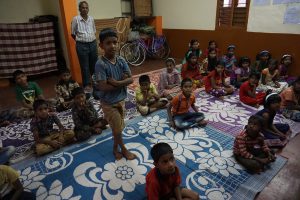
Children at Sushanti Orphanage introducing themselves
After a few minutes and a few songs from the iPhone, the children became less shy and started to play games with us. Hand clapping games were very popular, and the smaller children loved getting lifted into the air. It was so wonderful to see the children’s joy as we spent time with them!

Playing with the children at Sushanti Orphanage
We presented a cash donation to Sushanti Orphanage in the presence of the children. It is my hope that this presentation helps them understand that they are cared for. We learned that the donated amount was more than enough to pay for an entire month of rent for the facility; this amount will certainly make a tangible impact!
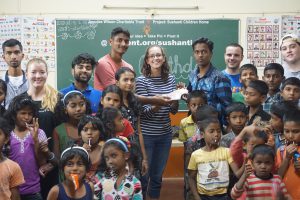
Donating to Sushanti Orphanage
After the donation presentation the girls kindly agreed to show us their living quarters. Though they didn’t have much, it was clear that the children took pride in their space. With interpretation assistance from one of the KLE students I shared with the girls that I did not grow up with siblings, and that I think they are lucky to have each other. The girls smiled at this thought and it warmed my heart to see the family these children had created for themselves. This experience was truly remarkable and I am so grateful to have had it!
